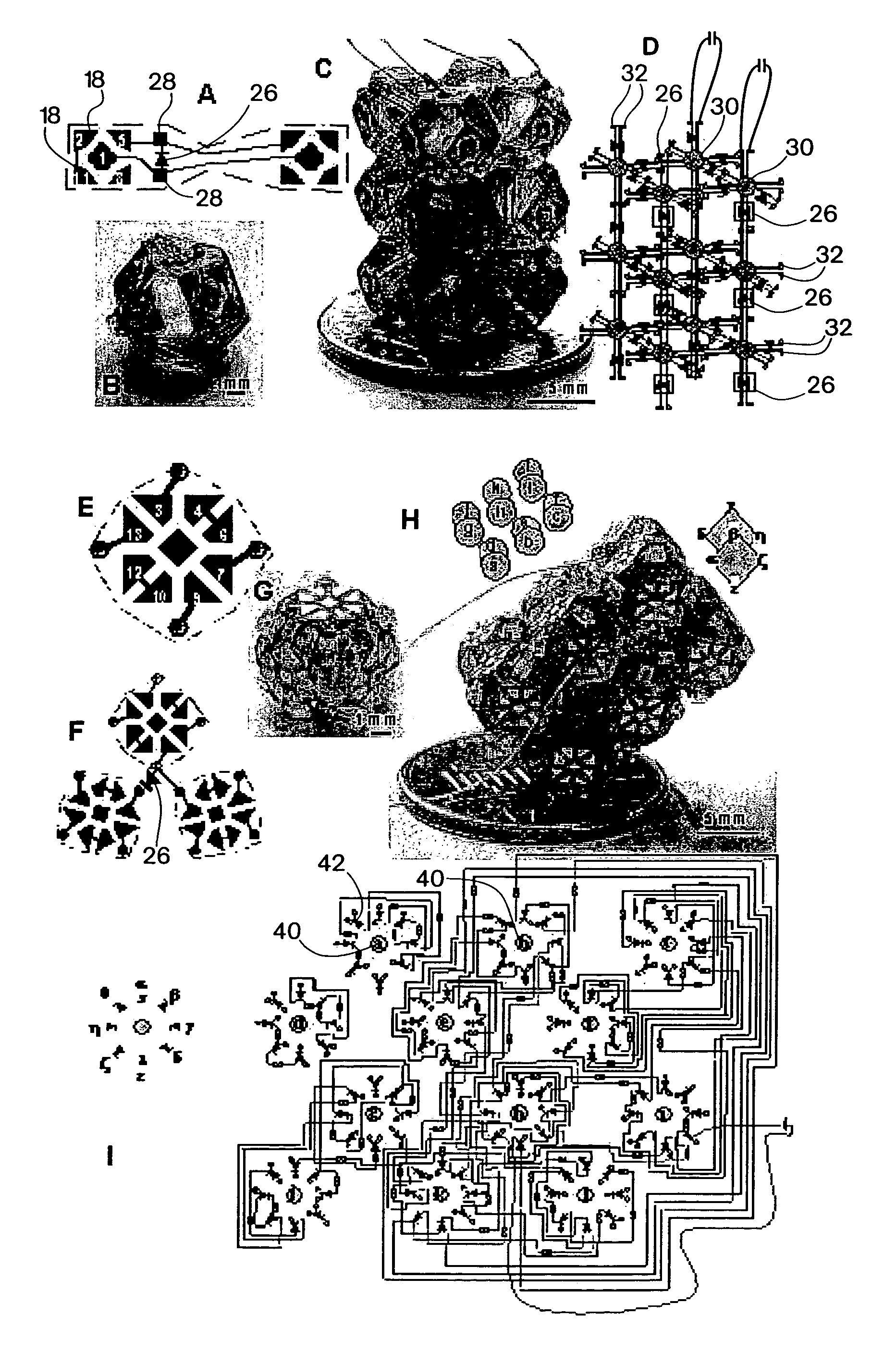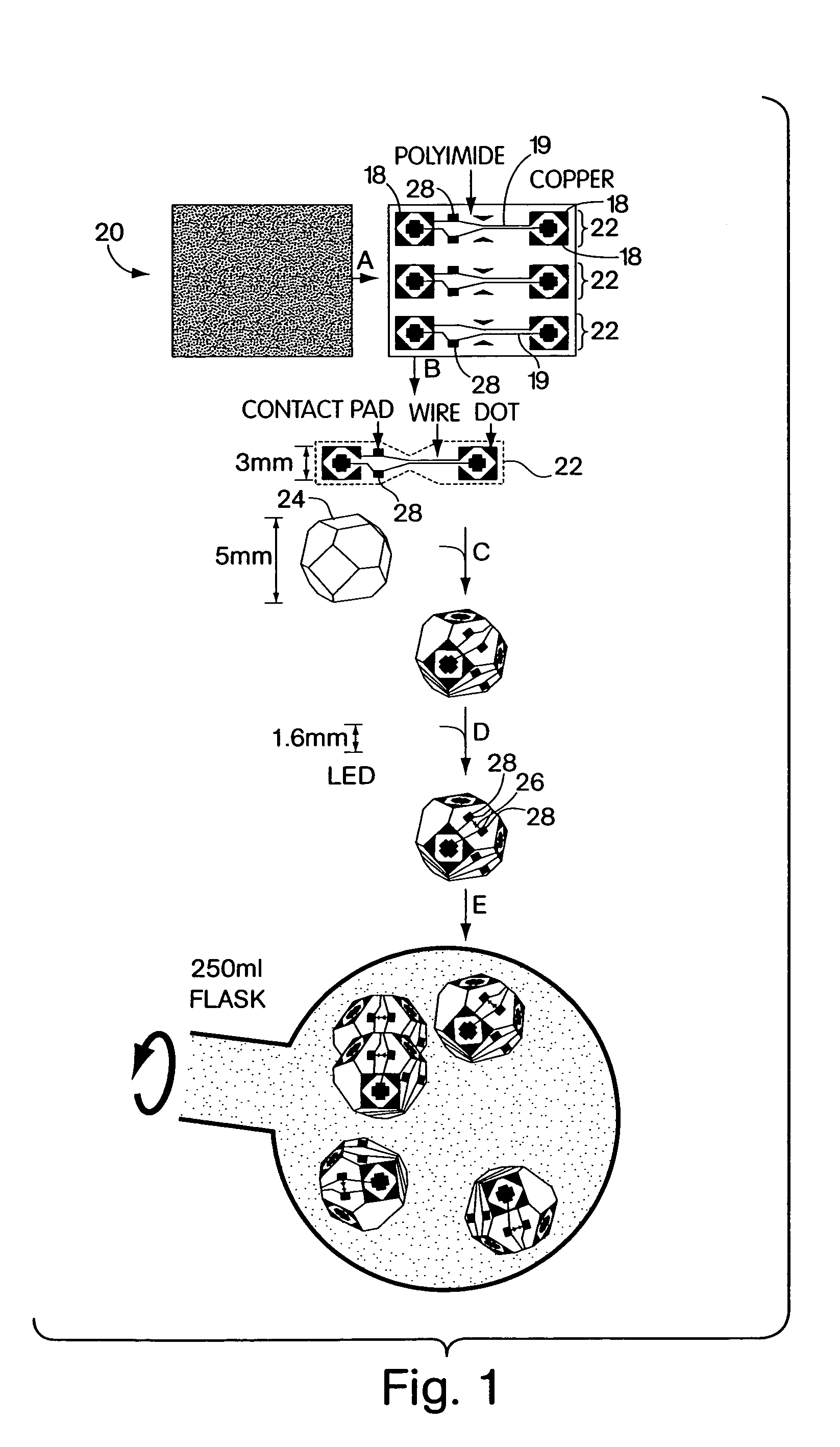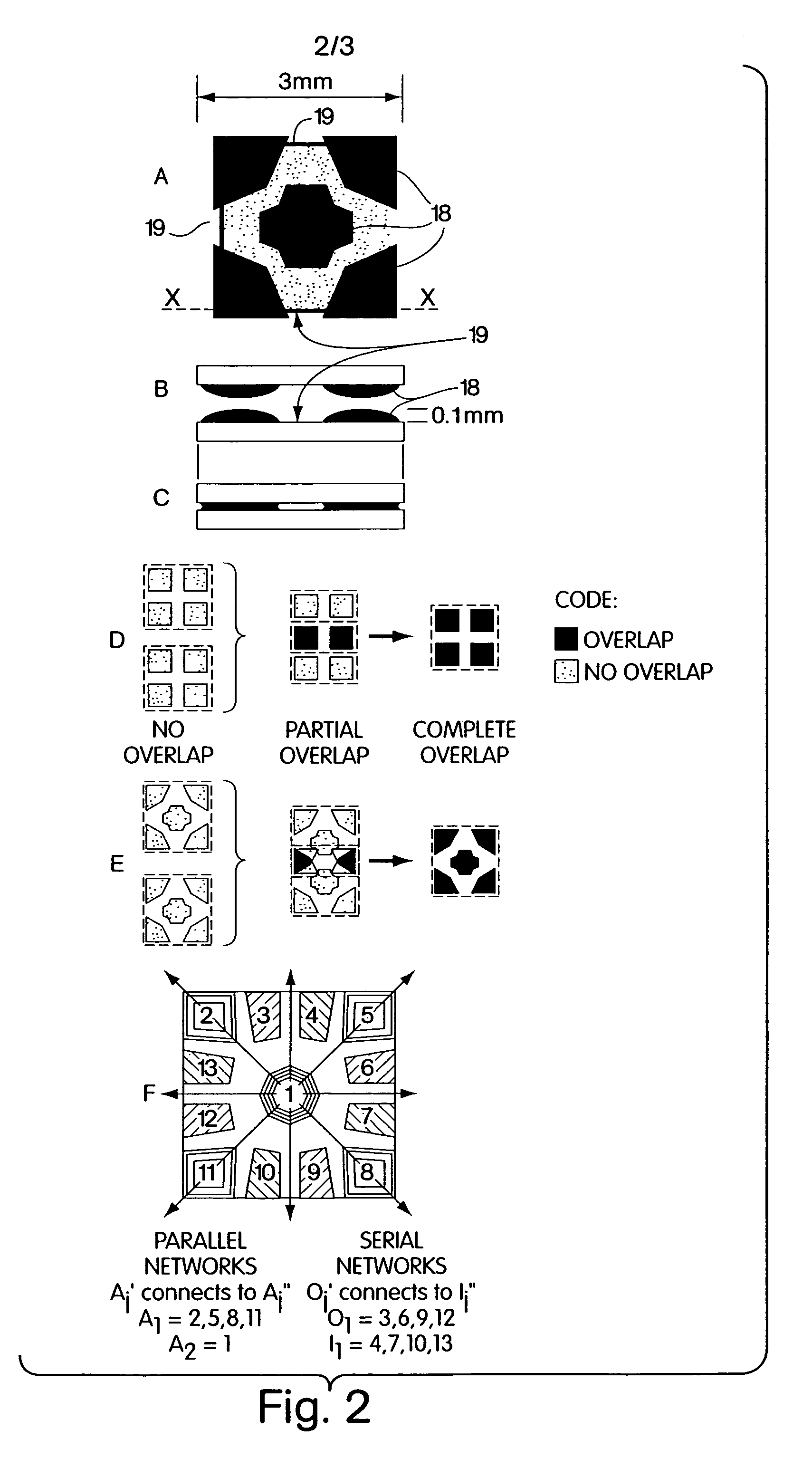Self-assembled electrical networks
a self-assembling, electrical network technology, applied in the field of electric circuitry, can solve the problems of insufficient self-assembly at large scale, inability to easily use photolithography to form non-planar and three-dimensional structures,
- Summary
- Abstract
- Description
- Claims
- Application Information
AI Technical Summary
Benefits of technology
Problems solved by technology
Method used
Image
Examples
examples
[0035]Processes based on capillary interactions between solder drops have been used previously to assemble electronic and mechanical structures: examples include “flip-chip” technology (Miller / IBM J. Res. Develop., 239 (May 1969)), and the rotation of parts of microstructures into non-planar orientations (R. R. A. Syms, E. M. Yeatman, Electronics Letters 29, 662 (1993); F. K. Harsh, V. M. Bright, Y. C. Lee, Y., Sens. Actuators A77, 237 (1999)). During assembly, recognition of the pattern of dots on one face by that on another orients and registers the patterns, and results in well-defined pattern of dot-on-dot electrical connections between different polyhedra. With appropriate designs, self-assembly of polyhedra can generate networks in which the LEDs are connected either in parallel or in series.
[0036]Fabrication: FIG. 1 outlines both the fabrication of the patterned polyhedra and their self-assembly into 3D structures that includes electrical networks. (A) An array of the basic p...
PUM
| Property | Measurement | Unit |
|---|---|---|
| size | aaaaa | aaaaa |
| Tm | aaaaa | aaaaa |
| melting point | aaaaa | aaaaa |
Abstract
Description
Claims
Application Information
 Login to View More
Login to View More - R&D
- Intellectual Property
- Life Sciences
- Materials
- Tech Scout
- Unparalleled Data Quality
- Higher Quality Content
- 60% Fewer Hallucinations
Browse by: Latest US Patents, China's latest patents, Technical Efficacy Thesaurus, Application Domain, Technology Topic, Popular Technical Reports.
© 2025 PatSnap. All rights reserved.Legal|Privacy policy|Modern Slavery Act Transparency Statement|Sitemap|About US| Contact US: help@patsnap.com



